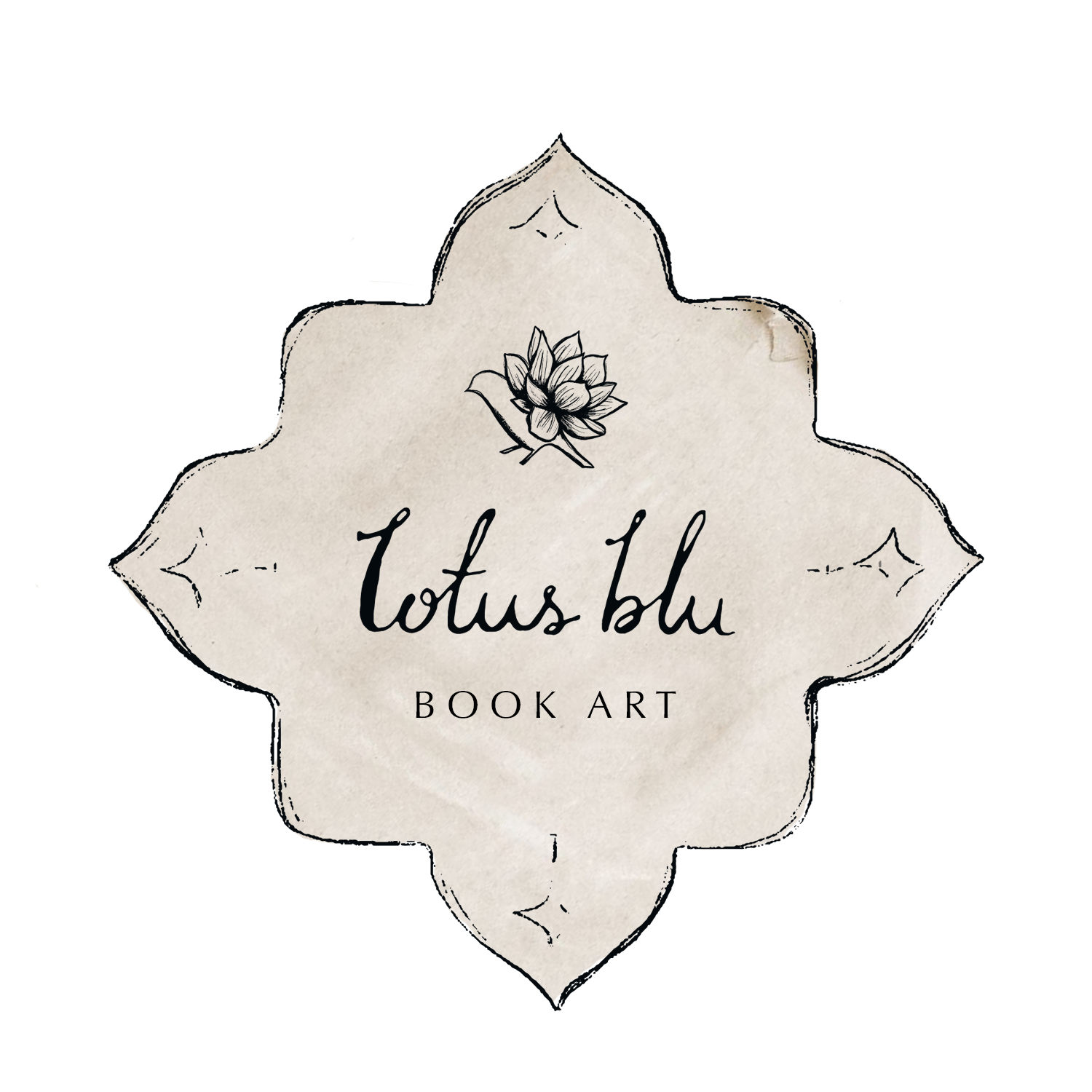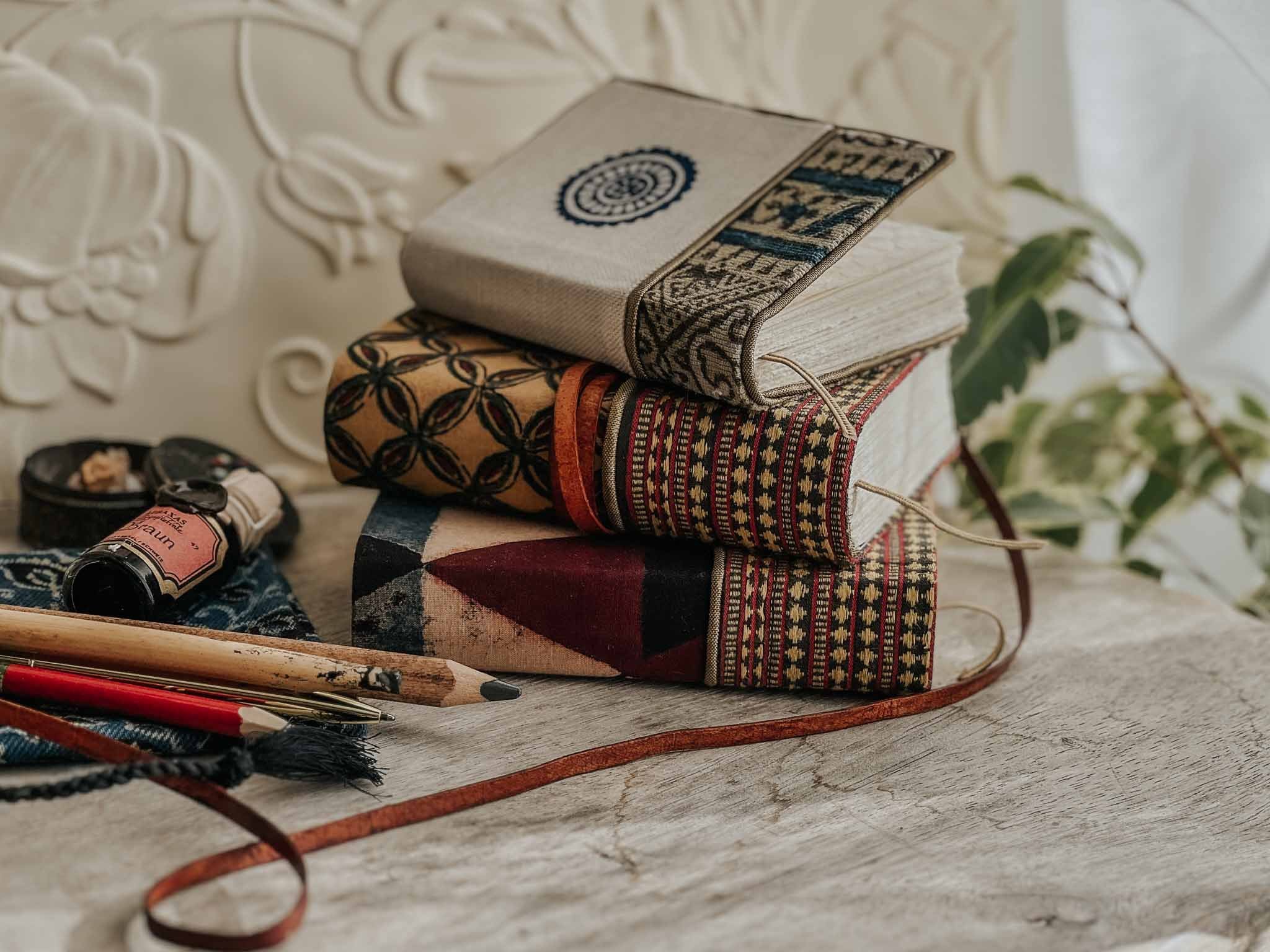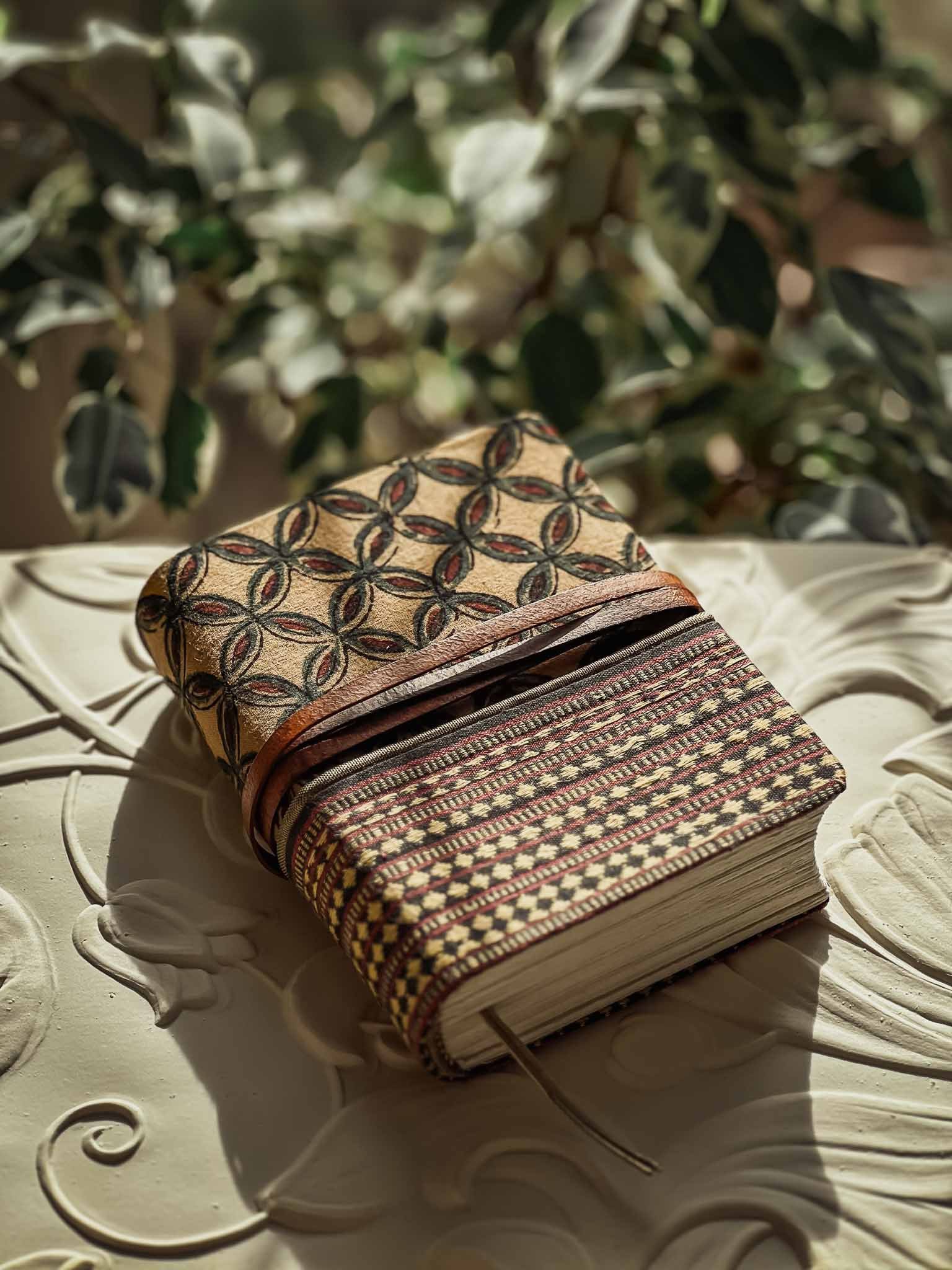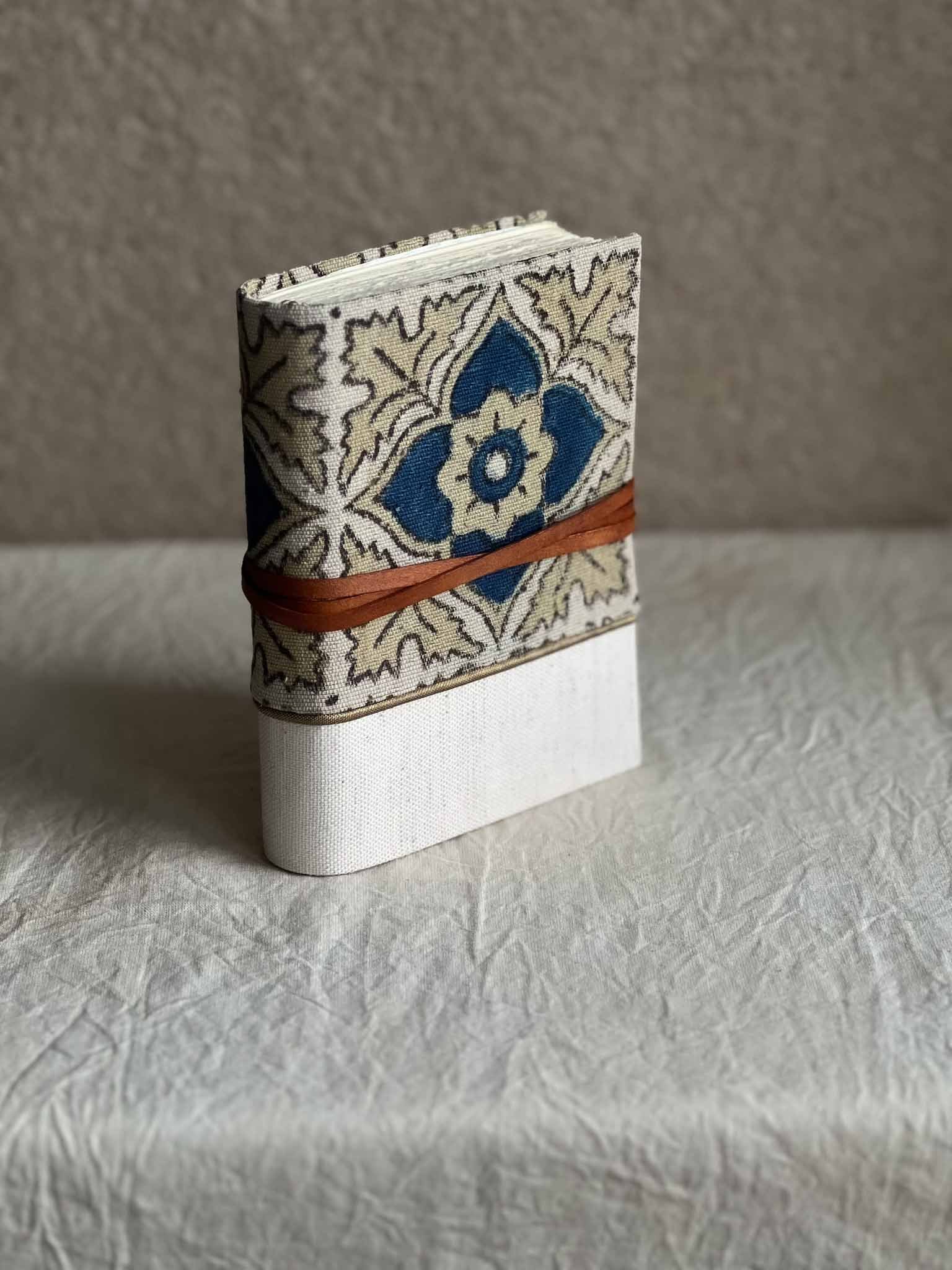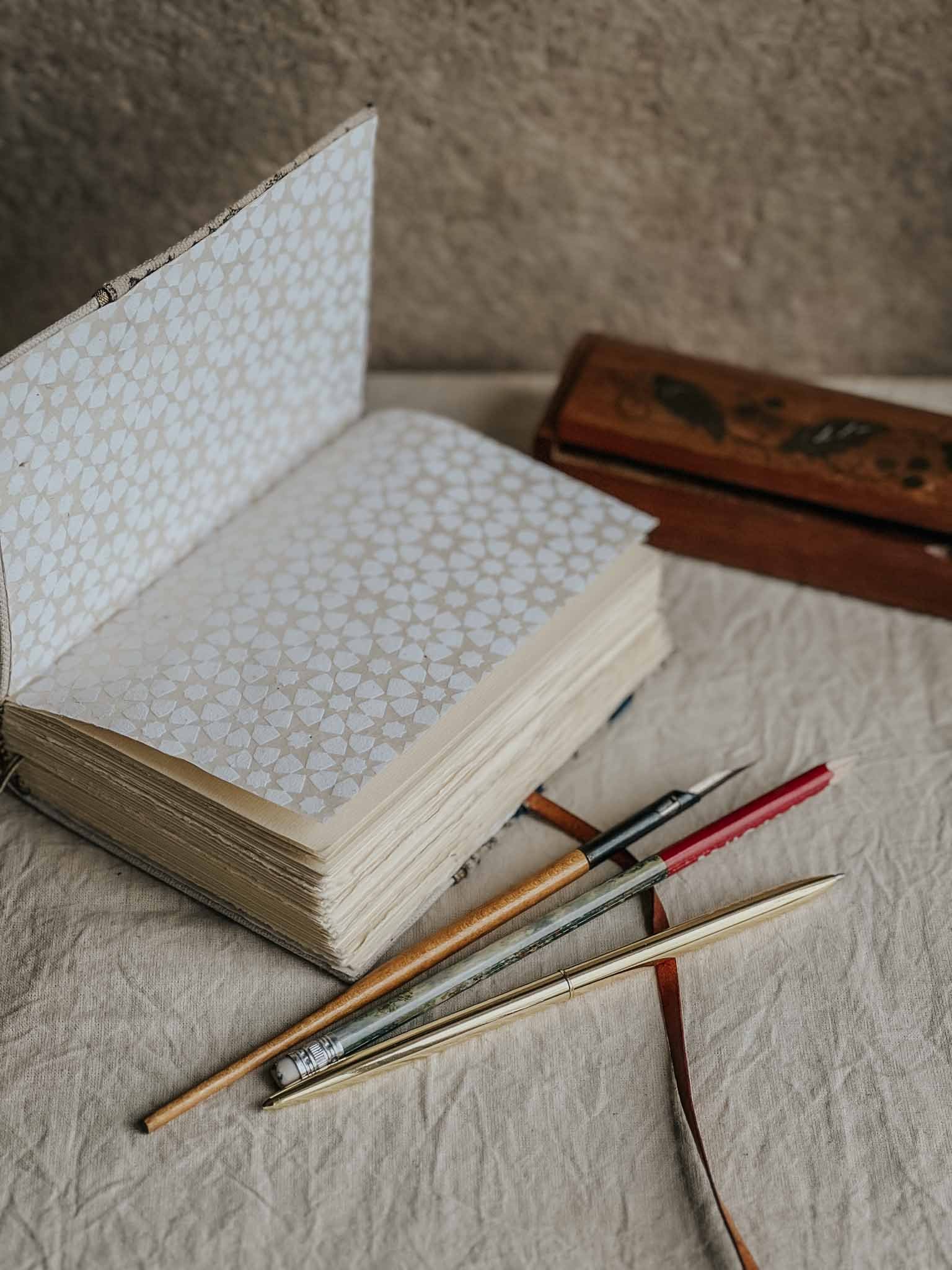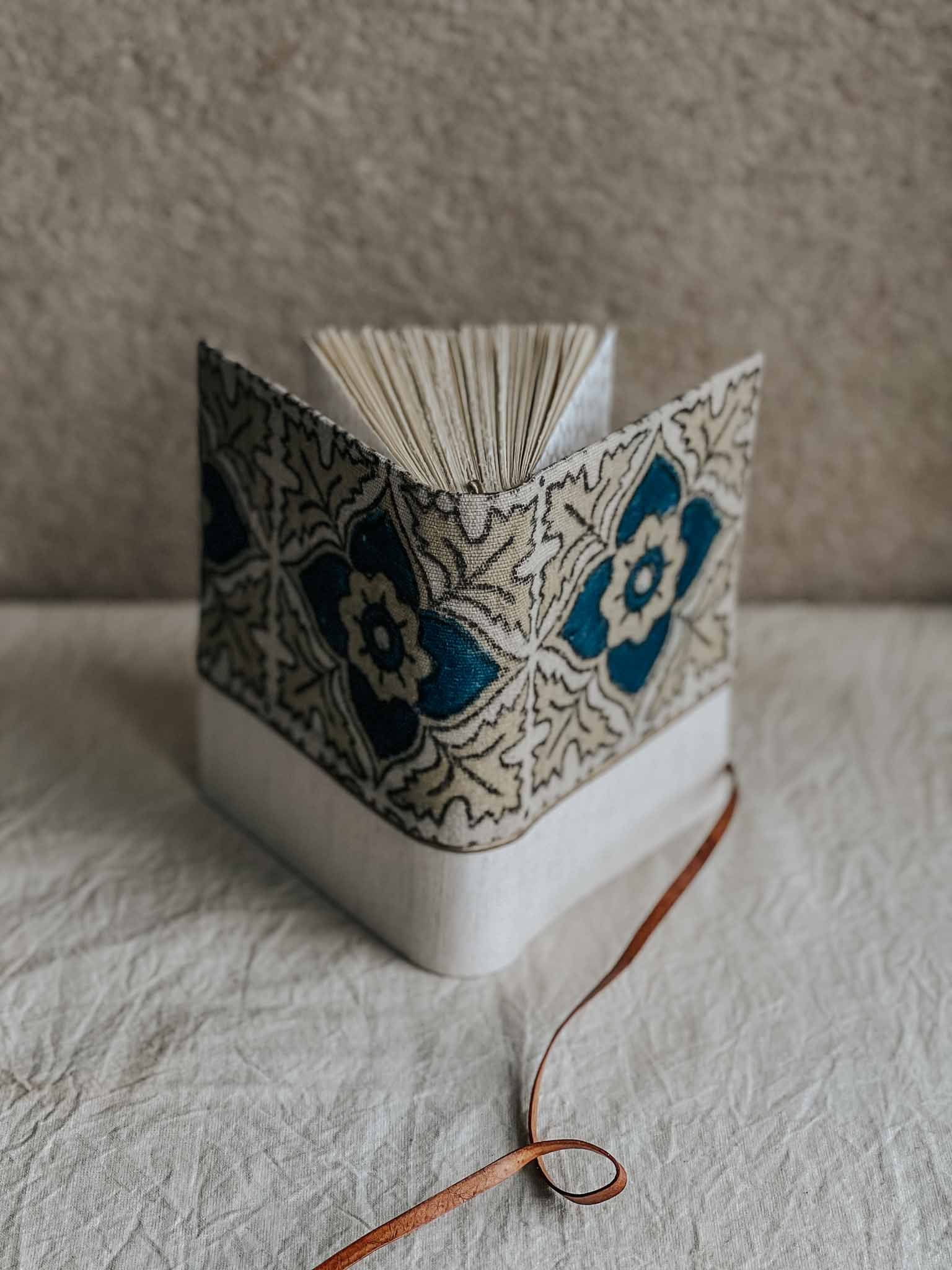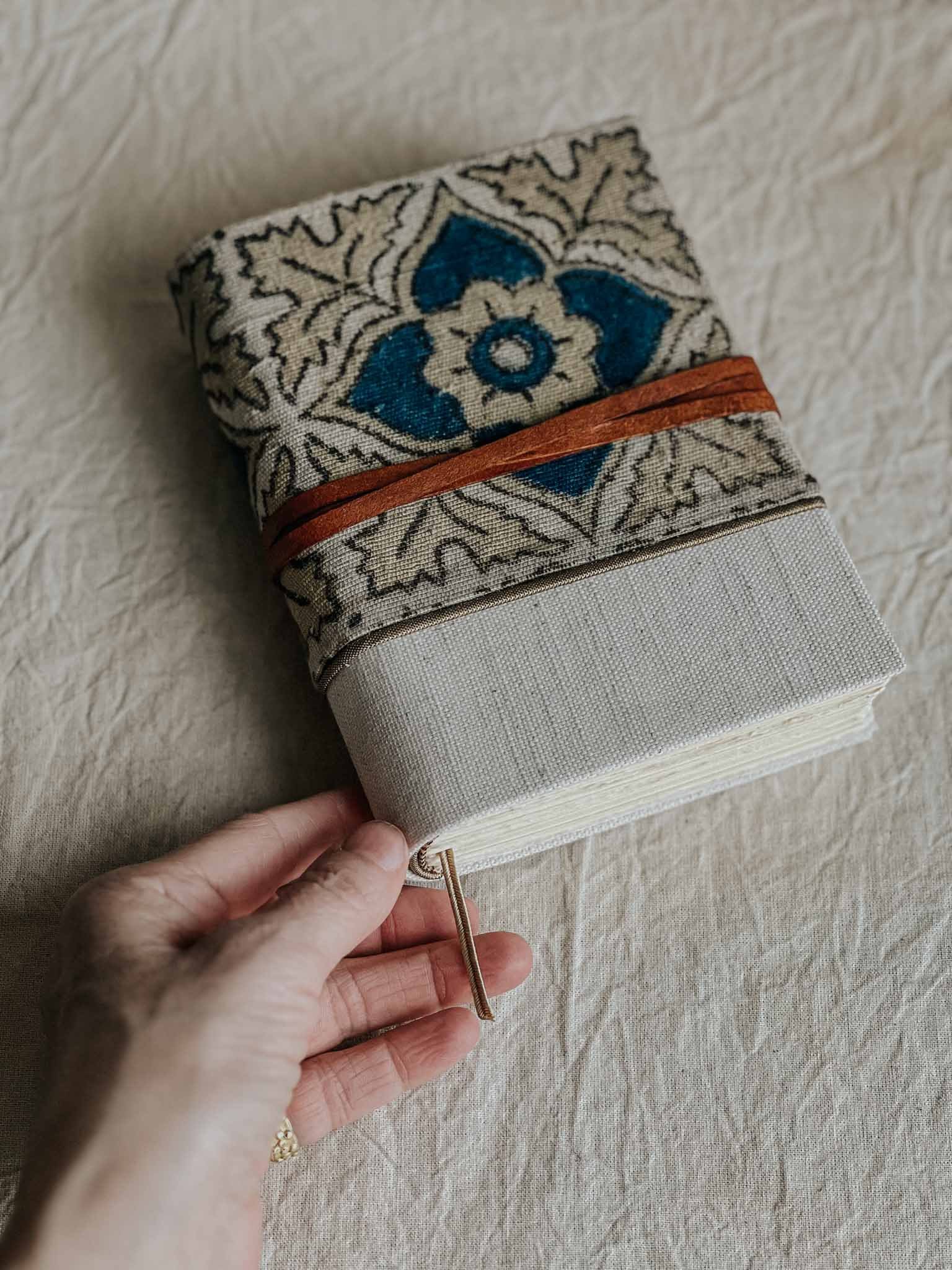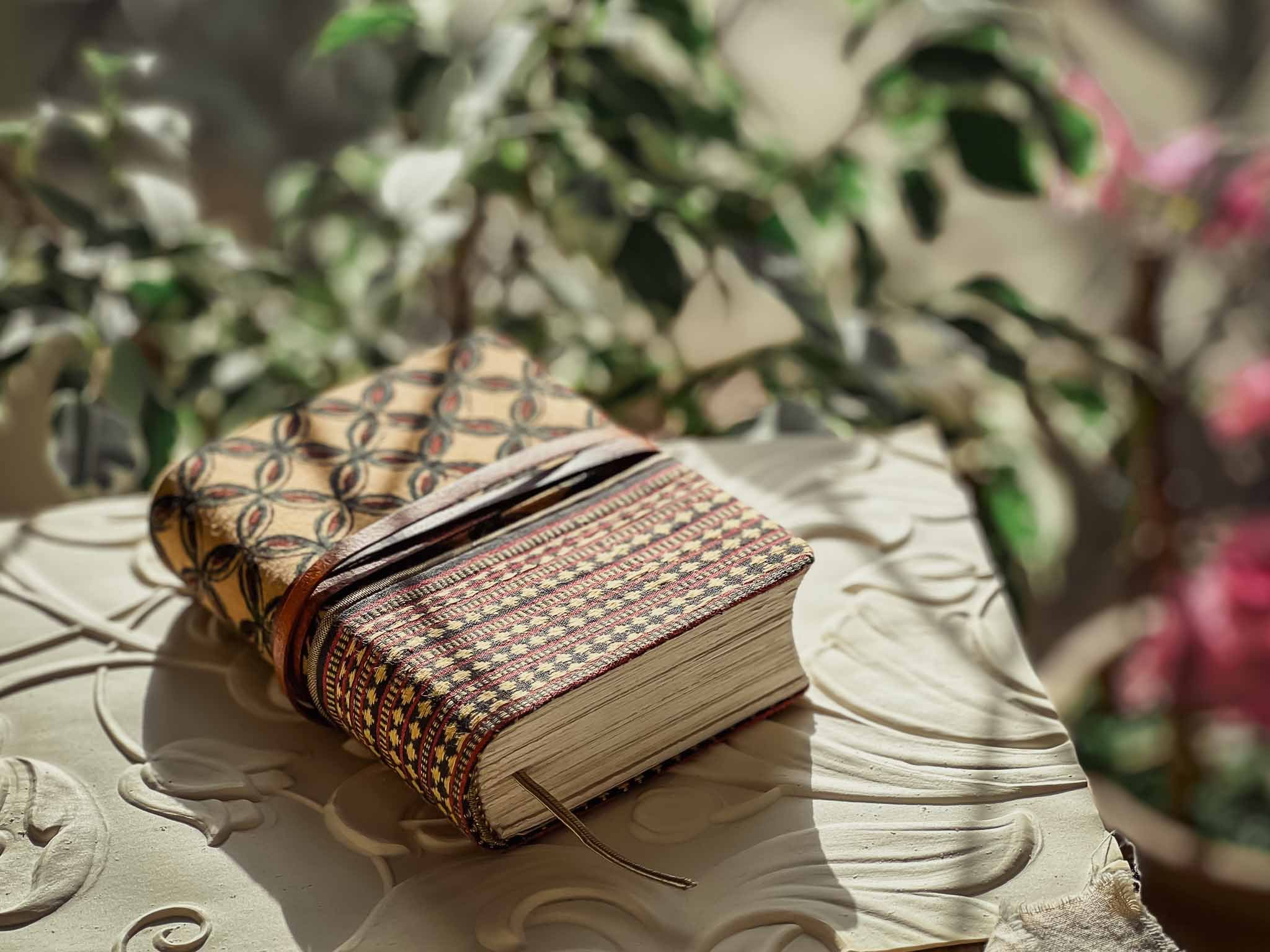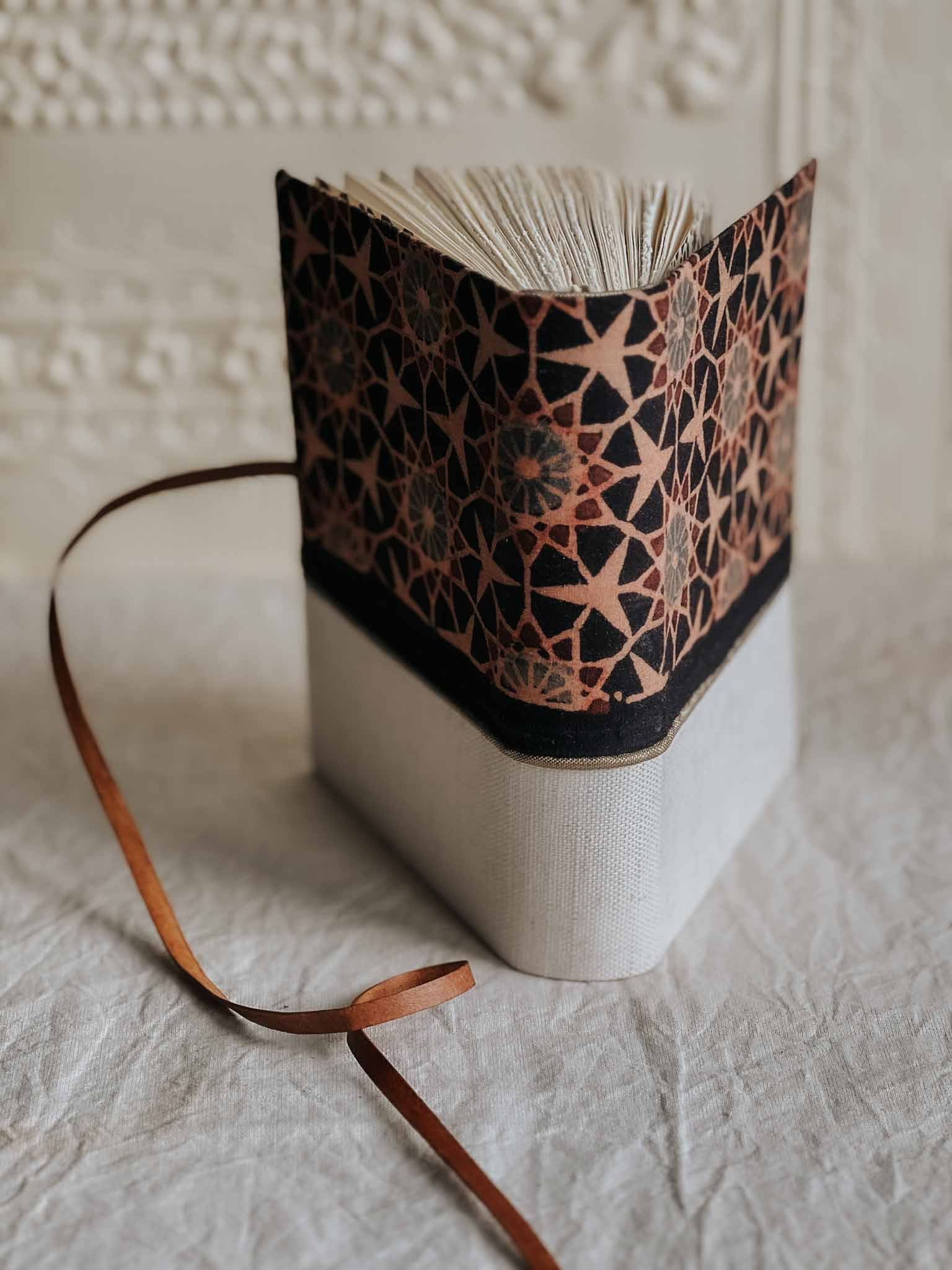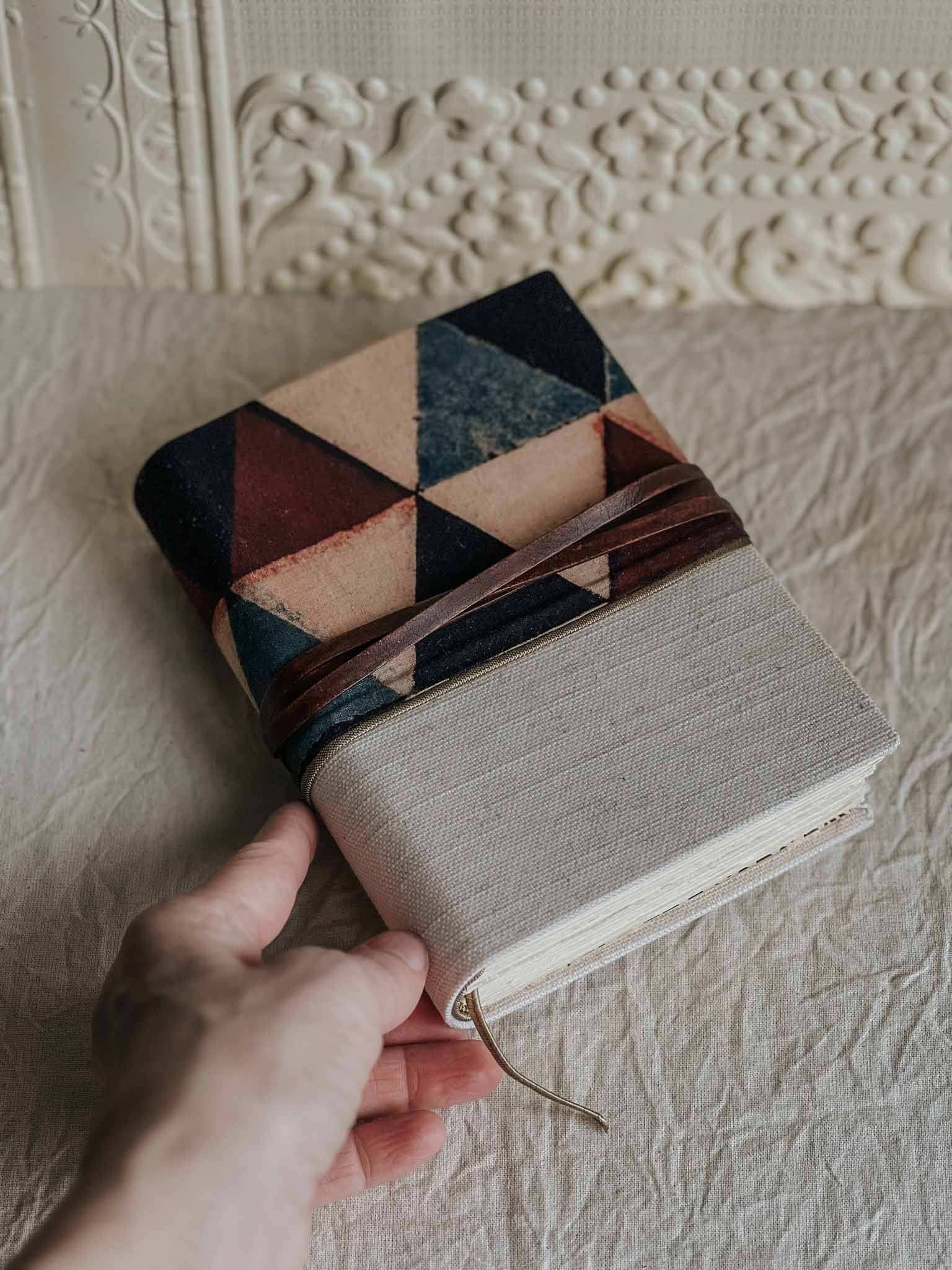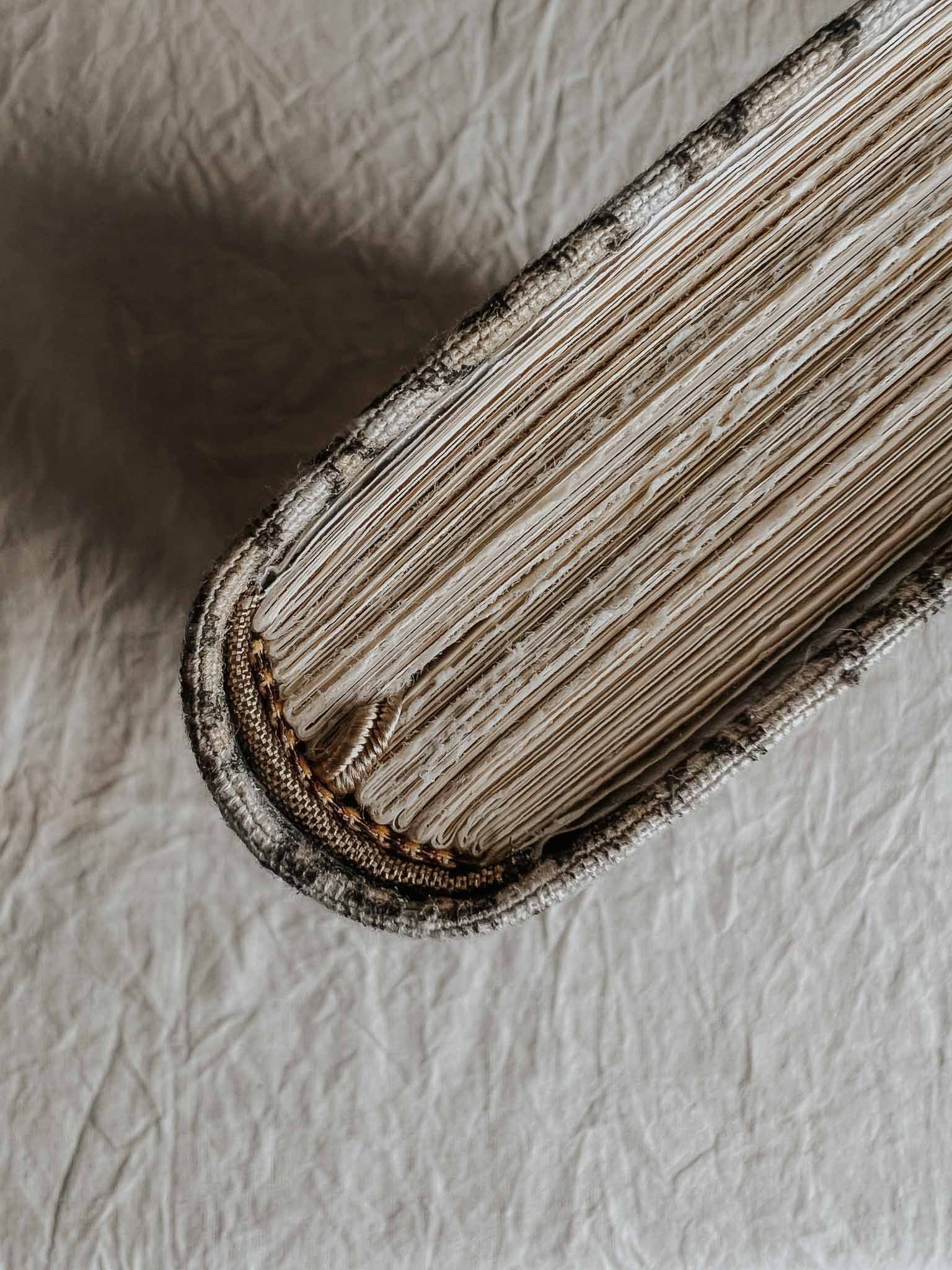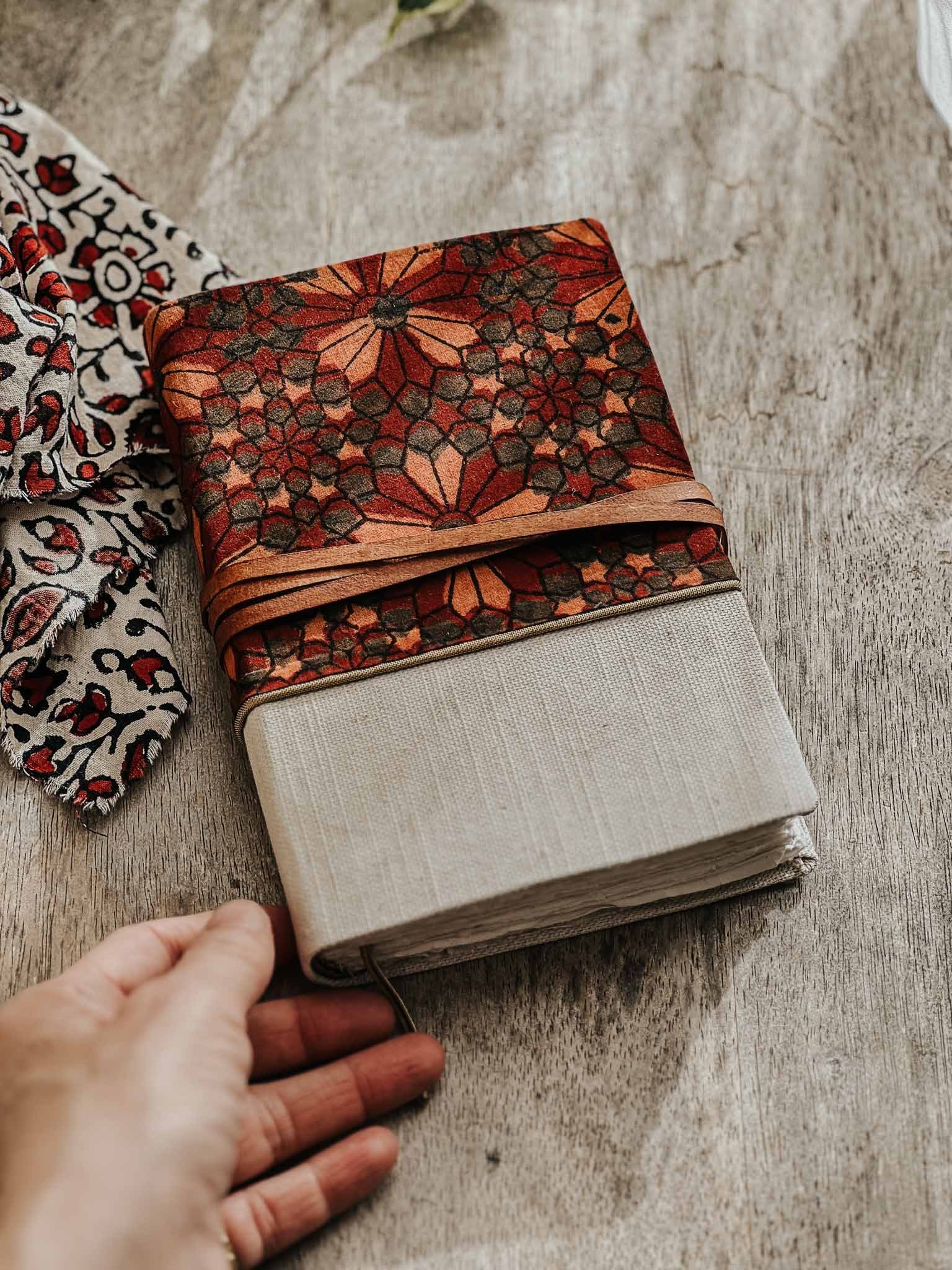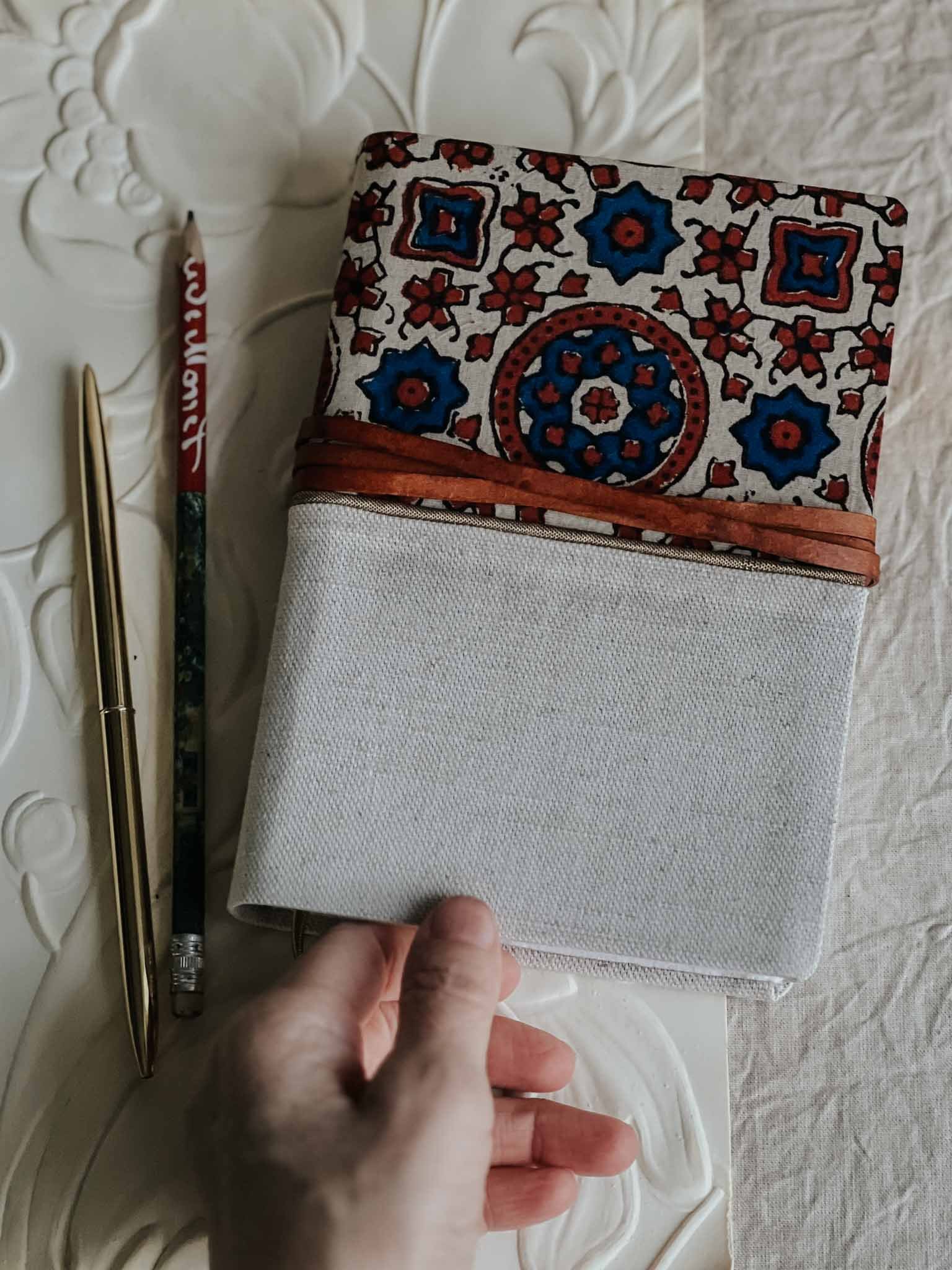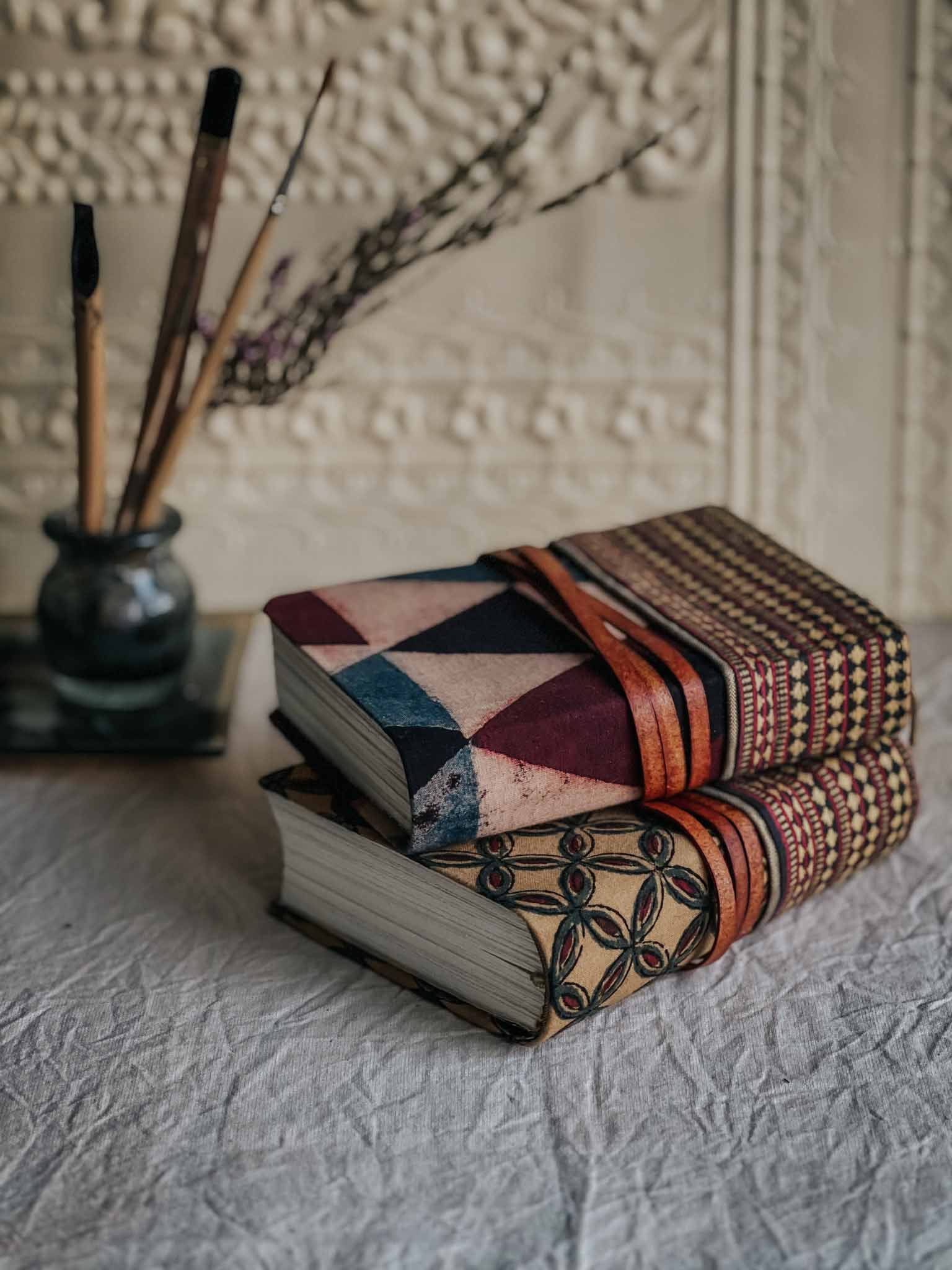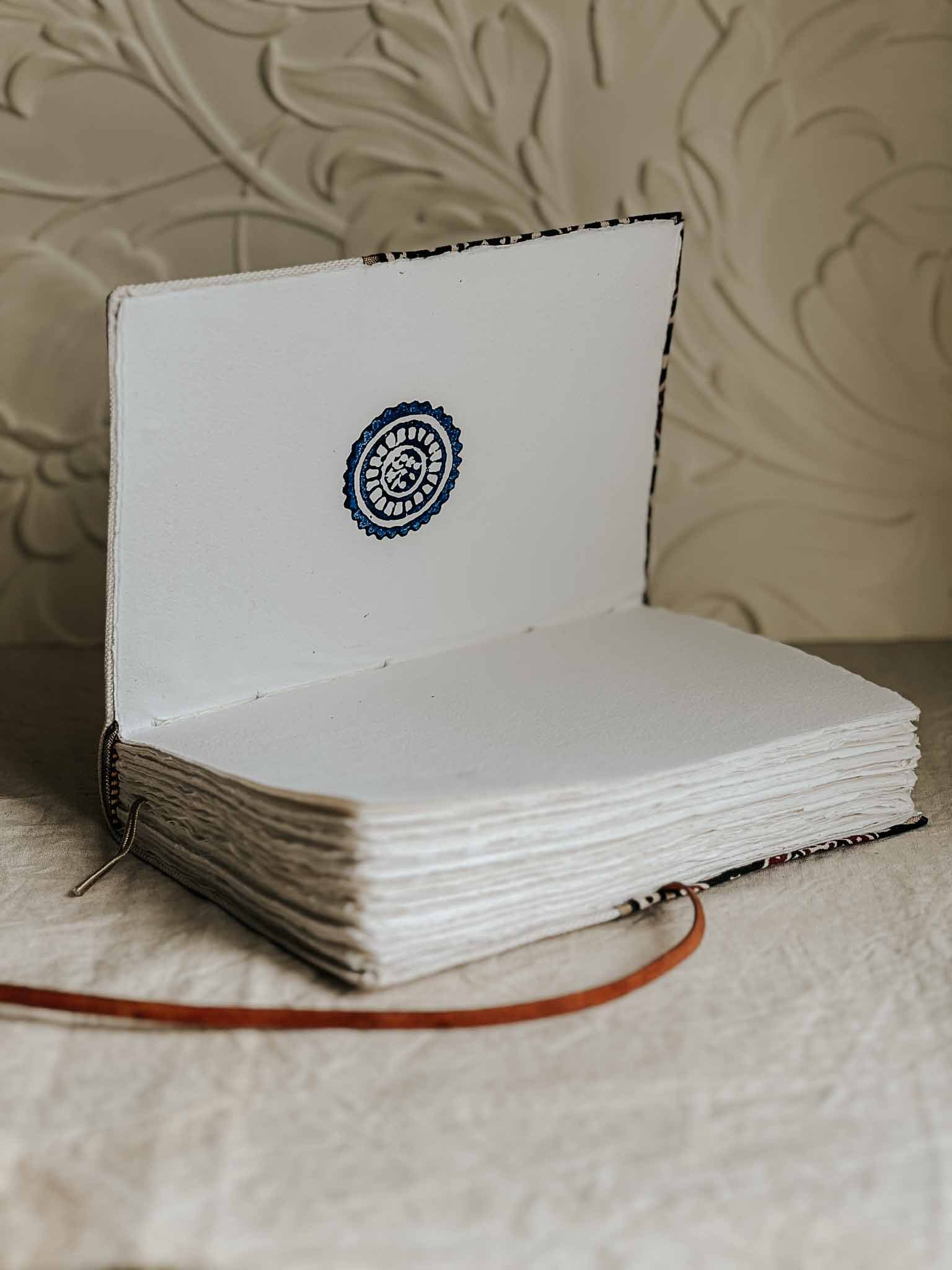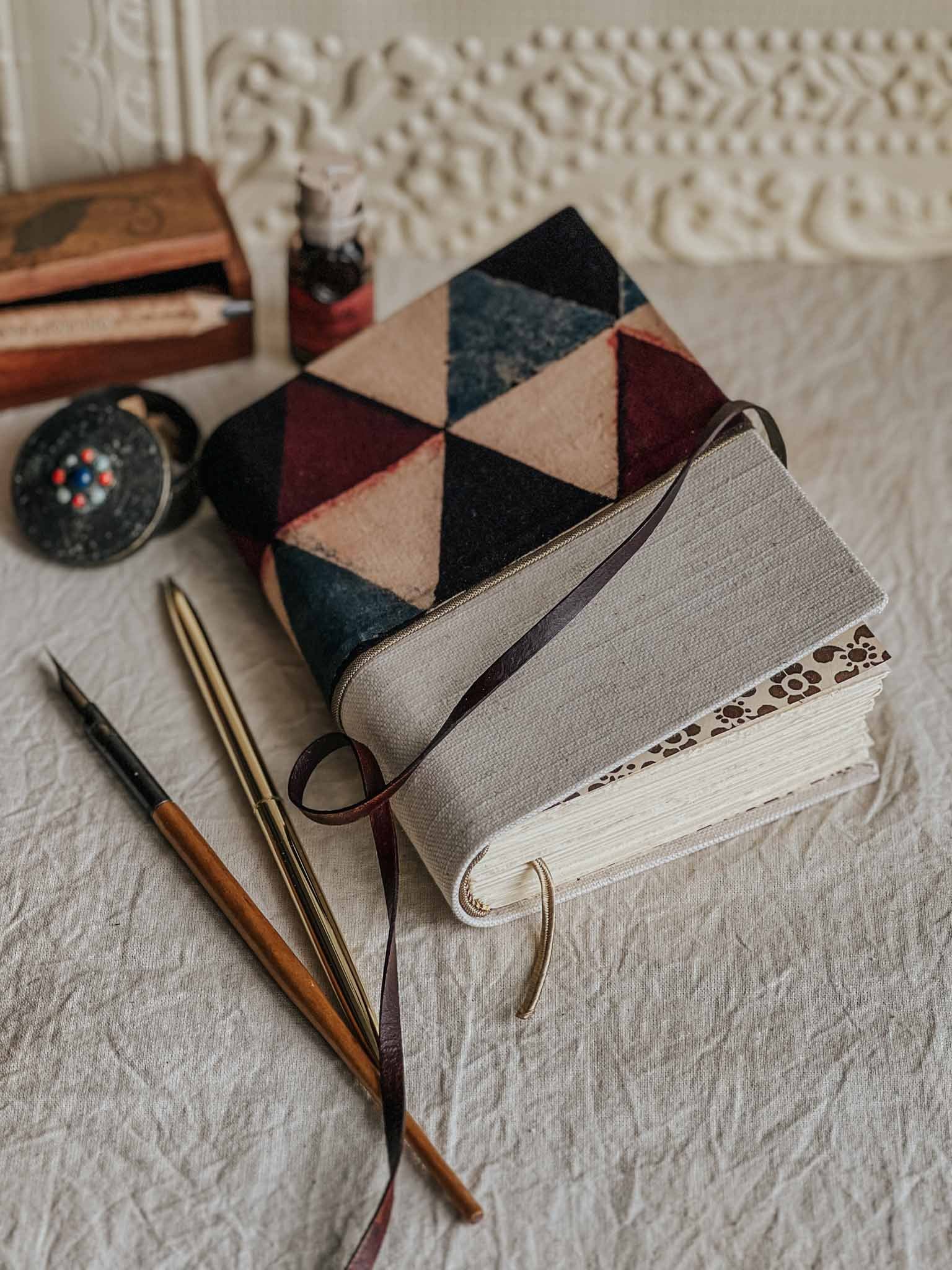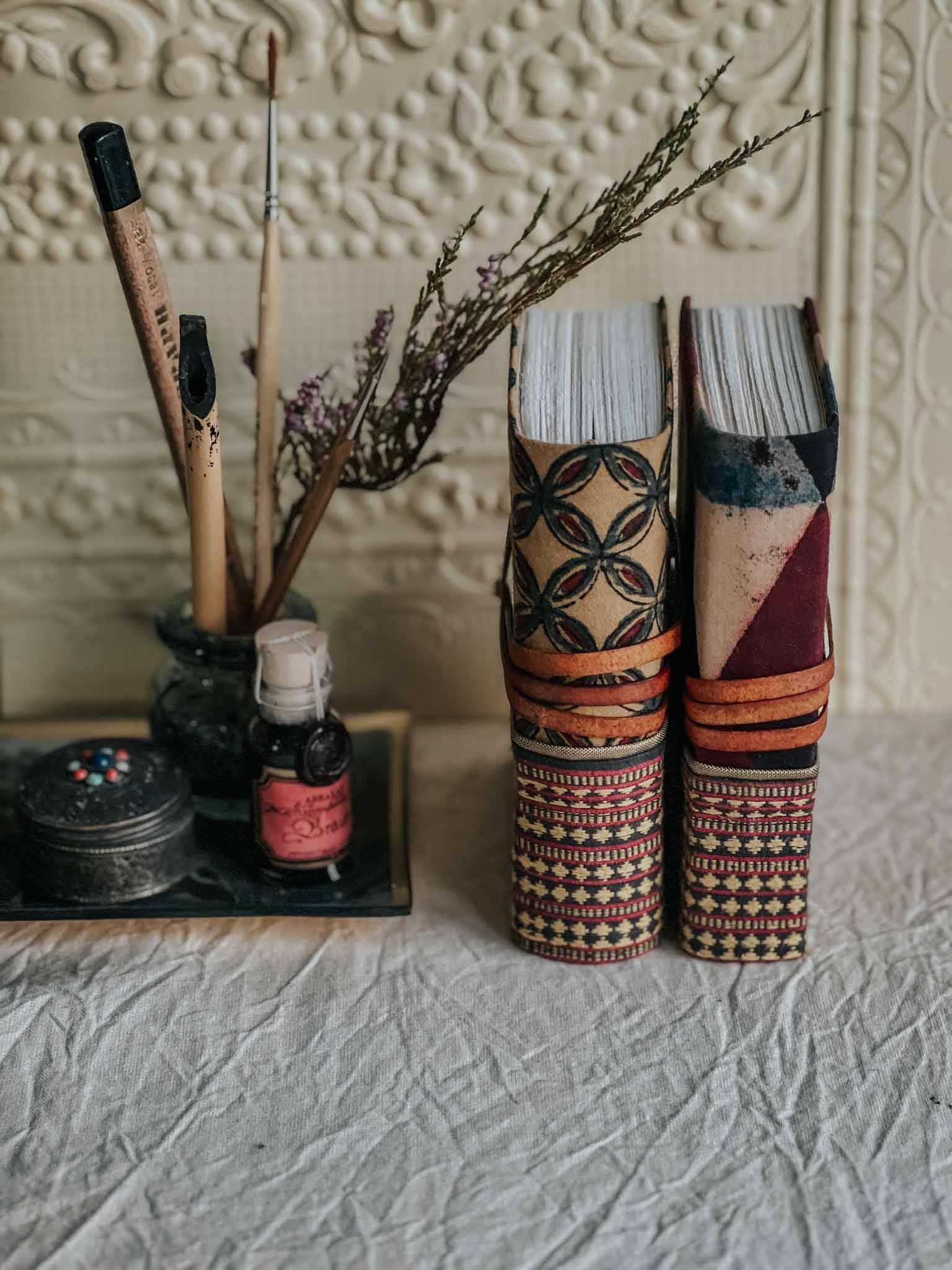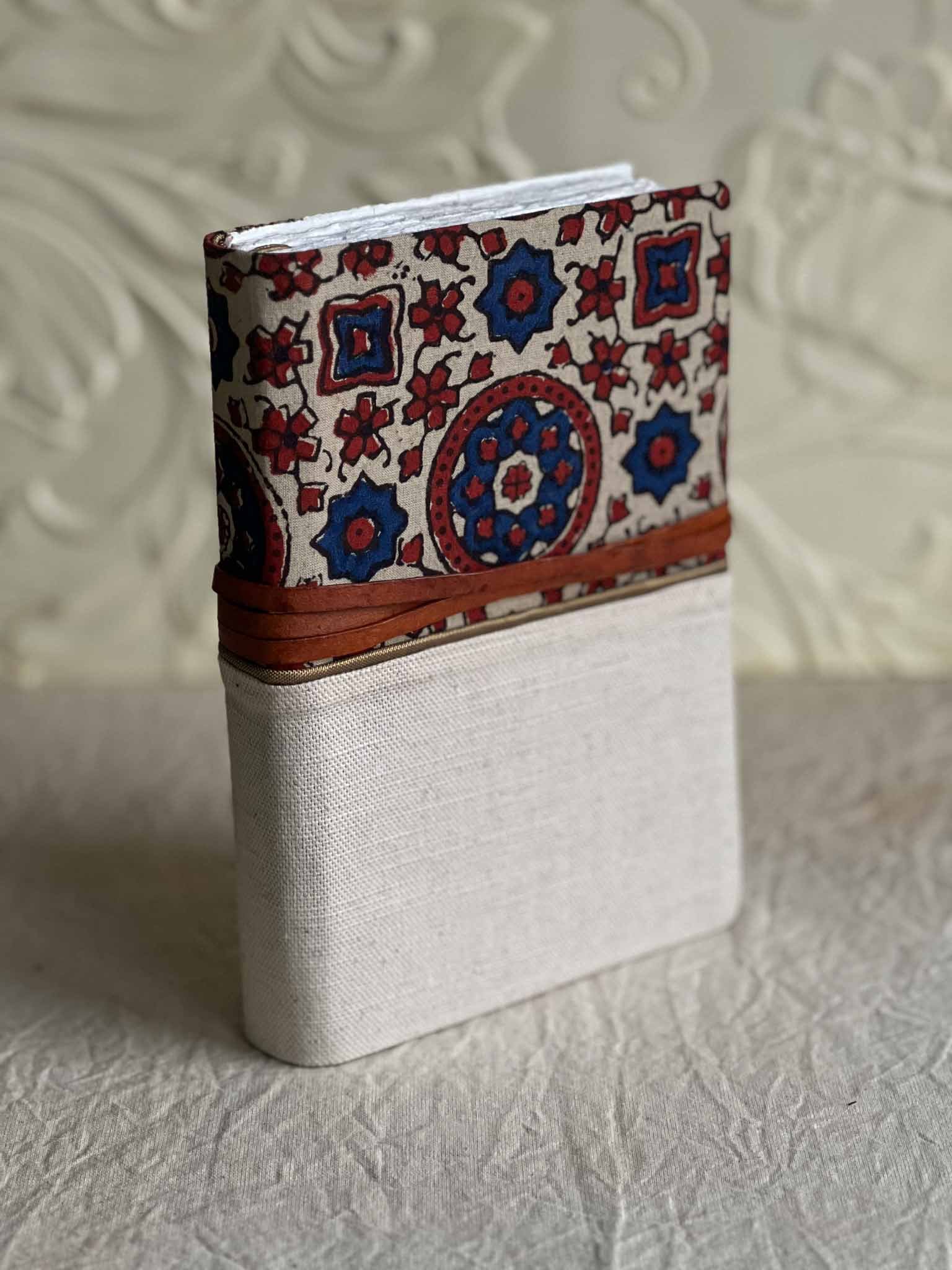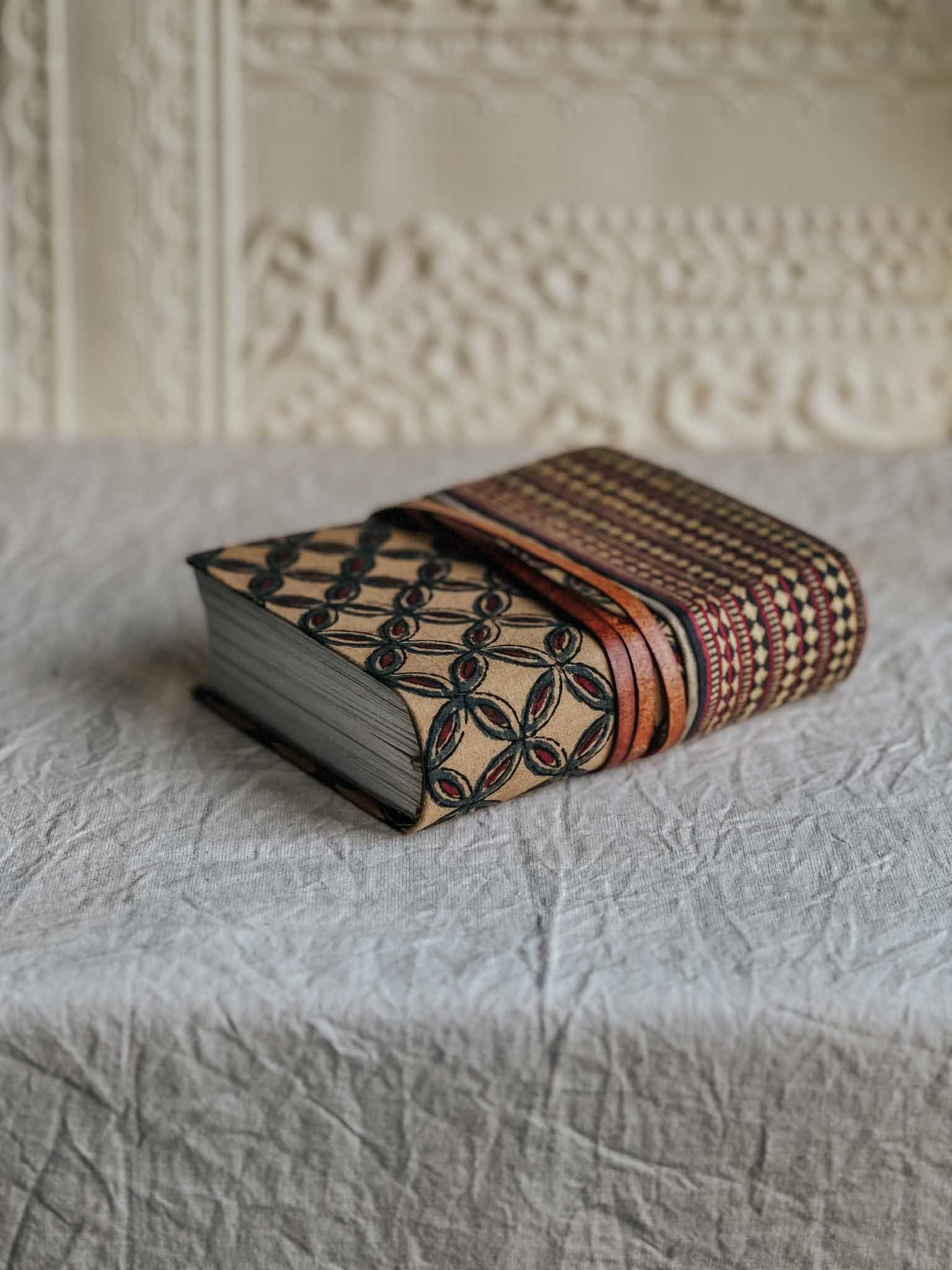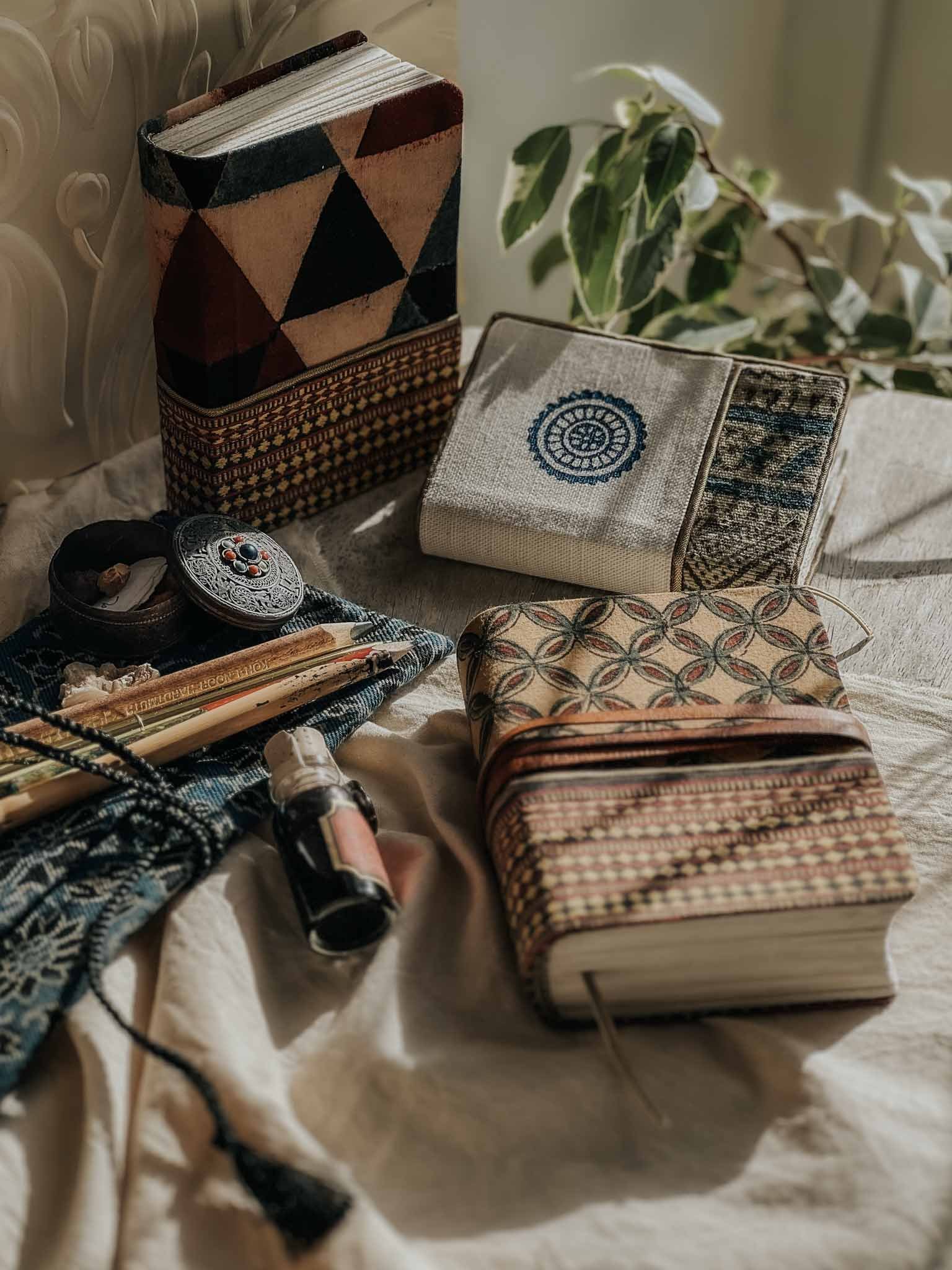THE HERITAGE COLLECTION
Series 5 - Ajrak
I began working on an Ajrak series of journals back in 2019 as part of my ongoing Heritage collection of journals covered mostly with vintage textiles from the Indian Subcontinent.
The first collection of journals covered with Ajrak had me taking a trip down memory lane. While creating the first two, one in indigo and the other in tones of madder red and ochre I was reminiscing of the time when I played on the banks of the river Indus as a child when we used to visit my grandparents home in Northern Pakistan for the summer holidays.
Near my father’s family home in Attock the Indus river, the bluest and longest river in Asia, converges with the murky brick red waters of the Kabul river. Each originating from high up in the Himalayas, flowing through some of the most rugged terrain in the world. Crashing and flowing with great speed side by side for miles before they merge into each other, a crystal clear azure blue body of water meandering South until it meets the Arabian Sea in the southern parts of the country.
I never set out with an end result in mind when creating this collection of journals, but it seems to have flowed out of me like a river, one that has taken its time in finding a resting place where it’s no longer rushing or noisy, but instead reduced to a quiet and beautiful calming trickle… This is how I have been creating this ongoing collection, in small thoughtfully made batches.
I like to think that these journals covered with Ajrak have elements and energy of thousands of years of history, earth, wind and fire intertwined within the very fibres of what is known to be the sacred cloth of the Indus, resist dyed with natural plant dyes primarily indigo and madder red and hand block printed by skilled artisans known as Usto in Sindhi. Each Ajrak goes through a series of 21 laborious processes before being washed in the river water along the banks of the Indus.
TWO RIVERS
One-of-a-kind writing journals.
THIS ONE FOUND A HOME IN THE WONDROUSLY CREATIVE SPACE OF CATHARINE MISOOK. watch the unboxing on Instagram.
My father and I on the banks of the Indus near the point where the Kabul and Indus river meet. You can just about see the two colours from this 1970’s photo.
NEW
AJRAK JOURNALS
SERIES 3
PAINT - DRAW - WRITE
One-of-a-kind journals covered with vintage Ajrak hand bound for your everyday creative writing, memoirs and art.
A selection of writing + sketching journals with Hahnemuhle paper and mixed media journals with cotton rag paper.
Ajrak
Tales told through fabric made by custodians of an ancient craft that dates back to the Indus Valley Civilisation of Harappa and Mohenjo Daro.
AJRAK
A Brief History
The region of Sindh is rich with history of Sufi saints and mystic poetry, folklore [of mostly tormented lovers] longing and belonging, it’s a place of colour, earthy reds and ochre and truest blues from the azure of Hala pottery to the turquoise tiled domes of mosques and shrines, but mostly it is famous for it Ajrak textiles which is an integral part of Sindhi culture, its seen as an emotional connection to the land of Sindh where lengths of Ajrak are used as various forms of apparel from turbans, dresses and shawls to bed sheets and tablecloths; a shawl or a turban are often tied to two trees or the legs of a charpai [rope bed] to make a makeshift swing for a baby.
Making a journal covered with this textile makes me feel like a teenager again, connected to my dearest and oldest friend who is Sindhi and whose home I spent many afternoons learning about their culture through their textiles of Ajrak, kantha and geometric patchwork rilli quilts, their delicious food and folk music; it was so different from the part Pashtun, part English culture I grew up with. This is what is so fascinating about countries in the Indian Subcontinent, it’s so vast that each province and region has hundreds of different cultures and traditions, each region has its own language, folk art, food, music, heritage textile and national dress that is still worn with pride today.
There’s so much more I would like to tell you about Ajrak, especially about the different cosmic patterns and motifs used, but I will leave that for another post.
I’ll leave you here with a poem by Farid-al-Din’ Attar a Sindhi poet, the poem speaks of how an ajrak wrapped around a weary soul can bring them back to the here and now when feeling scattered in thought and emotion. My hope is the journals from this collection makes each person who opens one up to feel centered and at peace when they come to pen their thoughts or make art.
Come you lost atoms, to your centre draw, and be the Eternal Mirror that you saw: Rays that have wander’d into darkness wide, return and back into your sun subside.
From the book Mantiq al- Tayr by Sufi Mystic Poet
-Farid-al-Din’ Attar.
A few years ago I stumbled across this beautiful and poetic documentary by Noorjehan Bilgrami who has worked tirelessly for the past few decades to protect the ancient craft of making Ajrak with natural dyes and hand block printed patterns.
If you have an interest in the history and making of world heritage textiles, you will love this short film.
Sun, Fire, River, Ajrak - Cloth from the Soil of Sindh,' 1998.
A documentary by Noorjehan Bilgrami of Koel gallery Karachi
Beautifully narrated by the captivating voice the late Zia Mohiyuddin.
